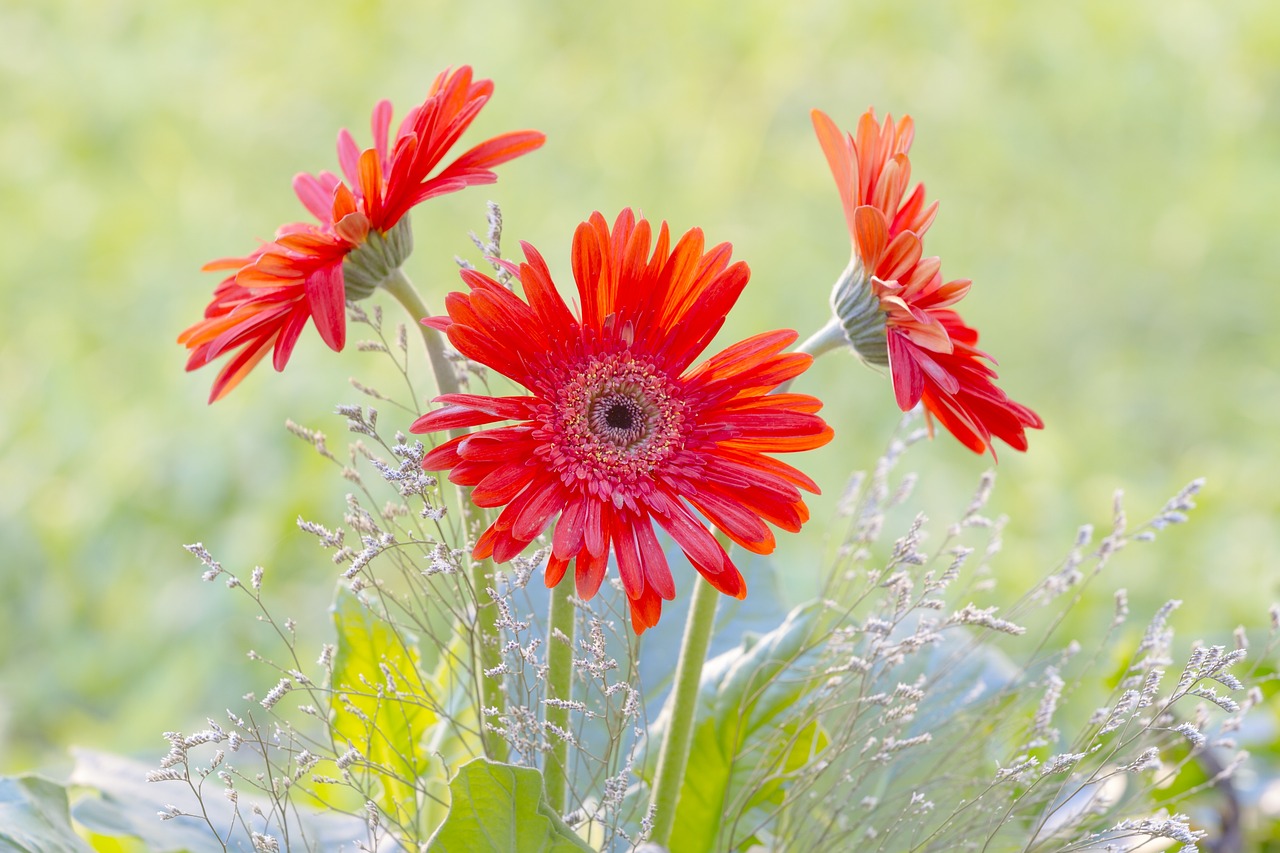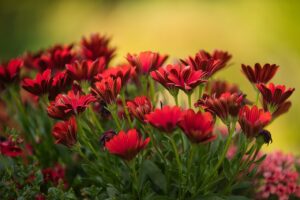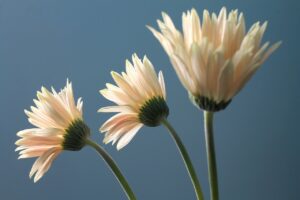Gerbera Daisy
Overview
The Gerbera jamesonii, commonly known as the Gerbera Daisy, is a vibrant flower native to South Africa. Admired for its joyful hues, it belongs to the Asteraceae family, akin to sunflowers. Flourishing in hardiness zones 8-11, this daisy favors well-drained soil and a blend of sun and shade, encapsulating beauty and resilience in each bloom.

Characteristics
Known for its bright and large flower heads, diverse color palette, and symbolism of joy and beauty.
Region
Native to South Africa; grown in hardiness zones 8 to 11.
Natural Habitat
Typically found in grasslands and savannah regions in South Africa.
Cultivation
Prefers full to partial sunlight, requires medium moisture and well-drained soil with pH 5.5-6.2, benefits from afternoon shade in hot climates.
Uses and Benefits
Gerbera Daisies, also known as Gerbera jamesonii, are not just vibrant decorative flowers but they carry symbolic meanings, often connected to emotions and well-being. Below are some of the uses and benefits of these cheerful blossoms:
- Symbol of Joy: Their wide array of bright colors radiates positivity and can enhance the mood of both garden spaces and homes.
- Decorative Appeal: Gerbera Daisies make excellent cut flowers for bouquets and table arrangements, lasting well in vases.
- Gift of Beauty: As a symbol of beauty and a sunny disposition, they are often given as gifts to bring a smile and convey admiration.
While specific health or medicinal benefits are not detailed in the research, the Gerbera Daisy’s charm lies in its ability to uplift spirits and contribute aesthetically to garden spaces4.

Cultivation Tips
To cultivate Gerbera Daisies (Gerbera jamesonii) effectively, consider the following guidelines:
- Plant in areas with well-drained soil, ensuring the pH is between 5.5 and 6.22.
- Choose a location that offers full to partial sunlight, with some afternoon shade in hotter regions5.
- Water regularly to keep the soil medium moist, but avoid waterlogging which can lead to root rot.
- Enrich the planting site with organic matter to nourish your daisies.
- In especially hot climates or during warm summer days, ensure cool nights for optimal growth5.
- For areas with dense soil, consider a raised bed to improve drainage5.
Keep in mind that consistent care and attention to environmental factors are key to the beautiful blooms of Gerbera Daisies.
Seasonal Considerations
When considering the cultivation of the Gerbera jamesonii, or Gerbera Daisy, throughout the seasons, it’s essential to understand its temperature and light requirements. Here are key seasonal considerations for maintaining a thriving Gerbera Daisy:
- In spring, plant after the danger of frost has passed.
- During hot summer months, provide afternoon shade to prevent scorching.
- Ensure proper soil drainage as winter approaches to prevent root rot.
- Offer protection from frost in areas that experience cooler temperatures in the fall.
Adapting care according to these seasonal changes can greatly enhance the growth and longevity of your Gerbera Daisies2 5.

Issues and Troubleshooting
Gerbera Daisies (Gerbera jamesonii) may encounter common issues that stem from their care. Overwatering can lead to crown and root rot, while underwatering can cause wilting and a decline in bloom production. To troubleshoot, ensure soil is well-draining and maintain a consistent watering schedule. Pests, such as aphids and spider mites, can infest the leaves and flowers; use a gentle insecticidal soap to mitigate this. If leaves turn yellow, it may be a sign of too much sun; relocate the plant to a location with some afternoon shade. Preventative measures such as proper spacing can promote good air circulation and reduce the risk of fungal diseases.
For optimal growth, protect from strong winds and feed with a balanced fertilizer during the growing season to encourage vibrant flowers.2 5
History and Folklore
The first scientific documentation of the Gerbera daisy, also known as Gerbera jamesonii, traces back to 1889 when J. D. Hooker described it in Curtis’s Botanical Magazine1. Originating from South Africa, the Gerbera daisy is steeped in symbolism, representing joy, beauty, and a cheery perspective4. There are folk tales that suggest these blooms can capture the essence of the sun’s uplifting energy.
References
1. Gerbera – Wikipedia. https://en.wikipedia.org/wiki/Gerbera
2. Gerbera Daisy Care: How to Grow Gerbera Daisies Outdoors – Bob Vila. https://www.bobvila.com/articles/gerbera-daisy-care/
3. Gerbera Daisy | Home & Garden Information Center. https://hgic.clemson.edu/factsheet/gerbera-daisy/
4. Gerbera Daisies: Plant Care & Growing Guide – The Spruce. https://www.thespruce.com/gerber-daises-4121360
5. Gerbera jamesonii – Plant Finder – Missouri Botanical Garden. https://www.missouribotanicalgarden.org/PlantFinder/PlantFinderDetails.aspx?kempercode=a518
Nicolas Duval
Nicolas is a passionate advocate for nature and the art of wildcrafting. His dedication shines through in Wildcraftia, a website he meticulously crafted to serve as a haven for nature enthusiasts worldwide. Driven by a deep appreciation for nature’s connection to humanity, Nicolas embarked on his journey in 2011 with SmokableHerbs, a platform showcasing his love for nature’s bounty. Building upon this foundation, he established Smokably, a thriving online store offering premium herbs and blends to a global audience.
